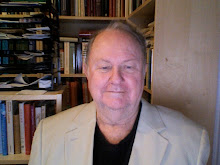Chris Brooks rightly concentrates on England as the key country in the emergence of the Gothic Revival as a major creative force. (As noted in the second hour, though, there is a major blind spot: Catalonia.)
Several features of the cultural climate of the 18th century in England were formative in the shift from Gothic from a mere antiquarian and dilettantish preoccupation among some members of the elite to its role as a vital creative force.
The most general of these trends was the rise of the Romantic sensibility. Here the key is probably the new emphasis on feeling and intuition, dethroning the central role of reason. Initially the Romantic movement was literary (yielding such major poets as Shelley, Keats, Wordsworth, Coleridge, Byron, and Blake). But it shortly developed a visual and (above all) musical dimension. Some hold that the triumph of "classical" music, especially instrumental music, in the 19th century is largely due to the enabling force of Romantic sentiment.
It was in Germany, however, that the first convincing theoretical explanations were offered. Friedrich Schlegel encapsulated the Romantic quest in the pithy formula: "striving for the infinite." Discarding the normative strictures of the previously regnant Neoclassicism, Romanticism prepared the way for "alternative aesthetics," including Gothic.
The concept of the Picturesque was promoted by William Gilpin, beginning in 1782. It was originally not a movement directed at art, but derived from art, especially such earlier landscapes as those of Claude Lorrain (cf. the contemporary work of Richard Wilson). The vogue for Picturesque travel highlighted gentle features in nature, which invited contemplation. (In poetry Wordsworth exemplifies this trend.)
The Sublime is the more formidable sibling of the Picturesque. Based on the obscure treatise of Longinus, discussion began in England at the start of the 18th century. Joseph Addison, for example, described a trip across the Alps as a Sublime experience.
It was left to the youthful Edmund Burke, however. to systematize the question. He held that there are two key aspects of human experience: love and fear. Our sense of beauty, stemming from love, tends to make us drawn to such features as smallness, smoothness, and delicacy. Contemplating scenes and works of art that have these qualities serves to calm and reassure us.
Stemming from fear, the feeling for the Sublime gains force from vastness, infinity, and magnificence.
Burke saw these two aesthetic responses, beauty and the Sublime, as mutually exclusive. What is revolutionary about his theory is that it is binary--and potentially pluralistic. No longer need we limit our aesthetic response to the pole of beauty, a monism that had been taken for granted in earlier aesthetics.
Exasmples of the Sublime by Loutherbourg (Avalanche in the Alps, 1804) and Turner (Burning of the Houses of Parliament, 1834) were examined. We noted the proposal of Robert Rosenblum (1961) to regard 19th-century landscapes, as those of Birstadt, as precursors of the 20th-century Sublime (Rothko).
Ruins, it seems, can be either Picturesque (Turner's Easby Abbey) or Sublime (Cole).
The second hour discussed the role of the Gothic in Catalan modernismo. As a political and cultural movement, Catalan nationalism reflected a sense of economic grievance--that this highly industrialized region was being short-changed by Castilian centralism. There was an appeal to the era of Catalan greatness, when its dominions had extended (in the 14th and 15th centuries) across the Mediterranean, as far as Sicily and Naples. During this period, of course Gothic had prevailed, as we saw in the Cathedral of Palma de Mallorca (begun in 1229).
The Casa Marti, better known as the Quatre Gats cabaret, stood at the center of Barcelona's bohemian creativity. The Neo-Gothic building was designed by the multitalented J. Puig i Cadafalch, whom we earlier met at the discoverer of the proto-Romanesque.
It was of course Antoni Gaudi i Cornet who was the presiding genius of Catalan modernism. We first looked at his Casa Batllo,' which combines medievalism with Moorish tiles and touches of art nouveau.
The Parc Guell shows his innovative use of arches, stemming from his study of Gothic, but yielding entirely novel results. These arches were to bear fruit in the chapel of the Colonia Guell at Santa Coloma.
For most of his later life Gaudi devoted himself to the Sagrada Familia church, still unfinished after 125 years. The 1882 plan, with its three great portals, reflects a study of French Gothic.
Today, the towers and pinnacles of the Sagrada Familia have rightly become the symbol of the city of Barcelona.
Thursday, November 8, 2007
Subscribe to:
Post Comments (Atom)

No comments:
Post a Comment